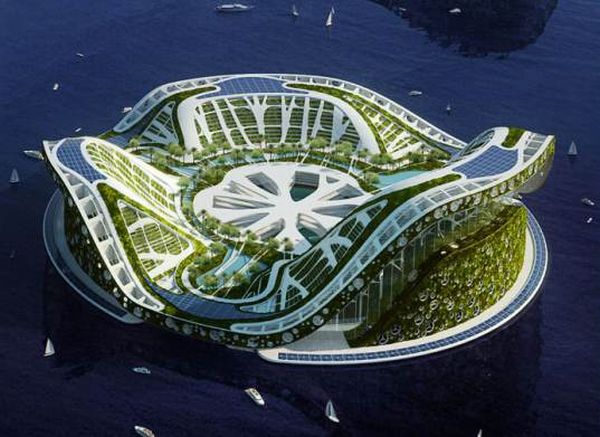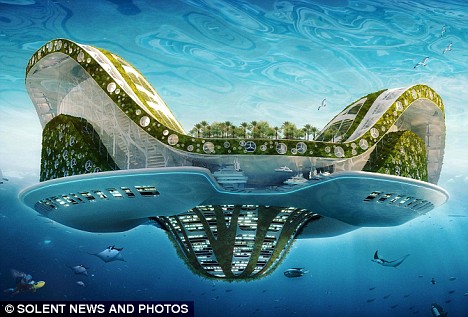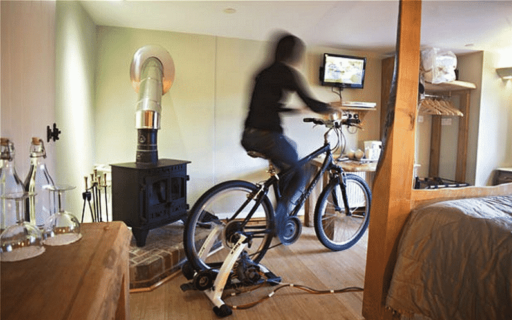At first glance, they look like a couple of giant inflatable garden chairs that have washed out to sea. But they are, apparently, the ultimate solution to rapidly rising sea levels. This computer-generated image shows two floating cities, each with enough room for 50,000 inhabitants.
Based on the design of a lilypad, they could be used as a permanent refuge for those whose homes have been covered in water. Major cities including London, New York and Tokyo are seen as being at huge risk from oceans which could rise by as much as 3ft by the end of this century.
This solution, by the award-winning Belgian architect Vincent Callebaut, is designed to be a new place to live for those whose homelands have been wiped out.
Looking into the future, there are chances of some adverse changes affecting our very ecological system. This can be a direct result of global warming, like rising sea levels affecting our land eco-system and engulfing our major coastal cities. In candid effect of such an instigation, there have been progressive yet unique proposals to design and build human habitats in the seas itself. And if (there is a big “if” here) there are credible indications of any tumultuous calamity that can severely affect our very fabric of life, such proposals may become a reality in spite of the resources consumed; as the essence of our very survival comes into question.
Eco-credentials
Self sufficient sustainability is the main pillar upon which such floating city propositions tend to be based. The city-islands are to be designed in such a manner so that the whole spatial element can make use of green technologies like wave, wind and solar energy to produce electricity. In addition, it can use farming, aquaculture and hydroponic techniques to grow its own food. Effectual zoning patterns of human habitats are also important, as the spatial nature shouldn’t only imbue energy efficiency but also convenient living conditions.
The Hurdles
1. Sea Storms:
Naturally this can be the severest hurdle in the face of this design.
2. Transportation:
A whole new transit system would be required, keeping in mind the total economic situation prevailing then. Furthermore, water transportation is not that feasible when compared to land transportation.
3. High Humidity:
The humidity levels would be much higher when being close to water. Moreover, there is no definite solution for cramped spaces in case of population increase.
4. High Cost:
The same problem plaguing the conventional cities; the cost involved could be huge even if we do possess the technology.
[ttjad keyword=”general”]





